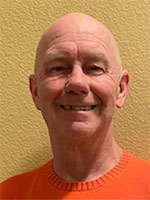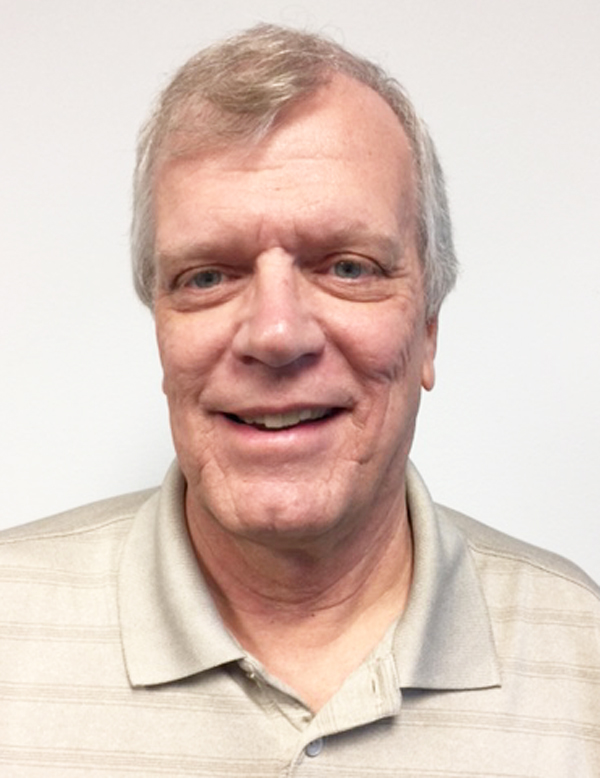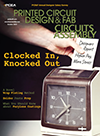Features Articles
 Making a board producible is entirely in your hands.
Making a board producible is entirely in your hands.
The goal of a good documentation package is that it is complete and coherent enough to proceed with the job without any explanations, waivers, errata or feedback of any kind. It doesn't always work that way, particularly when more than one vendor is involved. The fab drawing is more of a baseline from which they will all deviate to one degree or another. Even using the same vendor all the time is no guarantee that the DfM data come back immaculate.
The foundational aspect of PCB fabrication is a plausible phototool. That final imagery is derived from the artwork that you sent their way. What we know as global micro editing is where the phototool is crafted from the ECAD data. The artwork is more like a starting point.
Etch compensation – pre-distorting the artwork.The first item on the CAM operator's list is dealing with etch compensation. The traces and other geometry that appear on the board are what's left behind after the etch process. First, they must drill and plate the holes with copper. That's done prior to etching and adds a measure of copper to the entire panel. Only then do they mask off the circuit pattern that is not to be removed.
 Connecting the world will require a better energy solution.
Connecting the world will require a better energy solution.
The early stages of the IoT "hype curve" saw some wild predictions for the number of devices that would be deployed. They're not looking so wild now, with 15 billion devices in 2020 and 29 billion expected by 2030. About 60% of these will be consumer devices, the remainder industrial, or IIoT, devices including smart meters and sensors for monitoring automation equipment, transportation infrastructures, and buildings like offices and factories.
Knowing that IPv6's 128-bit address space would permit more than 100 IP addresses for each atom on the surface of the earth, we can see that the IoT could theoretically grow well beyond even the most ambitious predictions.
While we can solve many problems by adding more of these devices, we are creating another at the same time. Each one needs a source of energy to operate and the fact that many of them will be deployed in mobile or remote locations means a battery is the most obvious power source. Already, the US alone throws away about 3 billion batteries every year and our IoT habit could add many extra tons of hazardous waste. But there are some exciting alternatives.
 Outside suppliers can also affect a facility’s quality levels.
Outside suppliers can also affect a facility’s quality levels.
Use of Lean manufacturing philosophy and Lean Six Sigma tools have contributed to SigmaTron International’s quality and production teams achieving superior levels of quality, particularly within assembly operations. That said, even with outstanding process control, incoming material can impact achievement of Six Sigma quality levels. As a result, quality management needs to have a strategy for both ensuring supplier quality and identifying and correcting issues when that quality drops.
In this EMS provider’s model, suppliers are asked to complete a self-audit and provide applicable document examples and a copy of a Development Manual, Control Plan, PFMEA, Internal and External PPM data, Quality Reliability and Test equipment list and other documentation, if required, as part of the qualification process. If the subsequent score indicates a need for improvement, the EMS provider assigns a supplier quality engineer (SQE) who works with the supplier’s assigned stakeholders to meet the agreed-on improvement goal.
In cases where results of the self-audit or quality issues drive the need for additional scrutiny, a virtual or onsite audit may be conducted by the EMS provider. Audits for suppliers in North America are conducted by a US team and audits for suppliers in Asia are conducted by a team from the EMS provider’s international purchasing office (IPO) in Taiwan.
 Engineering ain’t free – even if (when) would-be customers think it should be.
Engineering ain’t free – even if (when) would-be customers think it should be.
Small. Size doesn’t matter.
Until it does.
Small companies and startups are often the worst: Junior Dictators consuming time in inverse proportion to the worth of their project. Much of that vaporized time has little relation to the technical specifics of the project in question.
As if they care.
Because the customer is always right (to monopolize everyone’s time).
So the micromanager’s ballet begins.
 The tech industry – and world at large – could use some moderation.
The tech industry – and world at large – could use some moderation.
Moderation and balance seem in short supply throughout the world these days. Between war on two sides of the globe and political extremes in vogue all over, the proverbial pendulum is swinging wildly, rarely landing in the center. And business and industry are no exception to current trends.
In business and especially technology, the hot area is everything artificial intelligence (AI). Whether hardware or software, AI is the holy grail de jour. The regulatory environment is similarly out of balance. With security leaks, loss of privacy and potential pirating that could lead to everything from automobiles to aircraft and even weapons being manipulated by the “bad guys,” layers of regulations, standards, audits and inspections have taken off in every segment of industry. Again, balance and moderation have given way to extremism.
In fact, industry has never needed balance and moderation more than now. “Reasonable” and “pragmatic” are two words that should be applied across a multitude of areas.
 Capacity is about to peak, and demand has slackened.
Capacity is about to peak, and demand has slackened.
Printed circuit board buyers can capitalize this year on cost-saving opportunities if they’re smart about it. Here are some factors to consider:
- Compared to a year ago, fluctuations in material pricing have settled.
- Worldwide semiconductor revenue declined by 11% and overall personal computer shipments fell almost 15% last year.
- Lead-times from Asia are relatively short compared to this time last year.
- PCBs manufactured in China and then imported into the US still face a 25% tariff. But the tariff exemption on two and four-layer rigid boards has been extended through the end of May 2024.
- Speaking of tariffs on boards made in China (as well as “Out of China” policies being adopted by some customers), new board houses are being built in India, Thailand, Vietnam and Malaysia to help offset those tariff costs and offer purchasers the option to buy elsewhere.
- Many companies in China are allowing employees to leave early to enjoy the Chinese New Year holiday because business there is down.
Press Releases
- StenTech Strengthens Precision Parts Platform with AME Acquisition
- Count On Tools Enhances Selective Soldering Precision with Expanded Nozzle Lineup
- ViTrox Presents Advanced Inspection and Smart Manufacturing Solutions at NEPCON Asia 2025
- ASC Sunstone Circuits Adds New Options to OneQuote While Maintaining Real-Time Pricing on Core PCB Features


